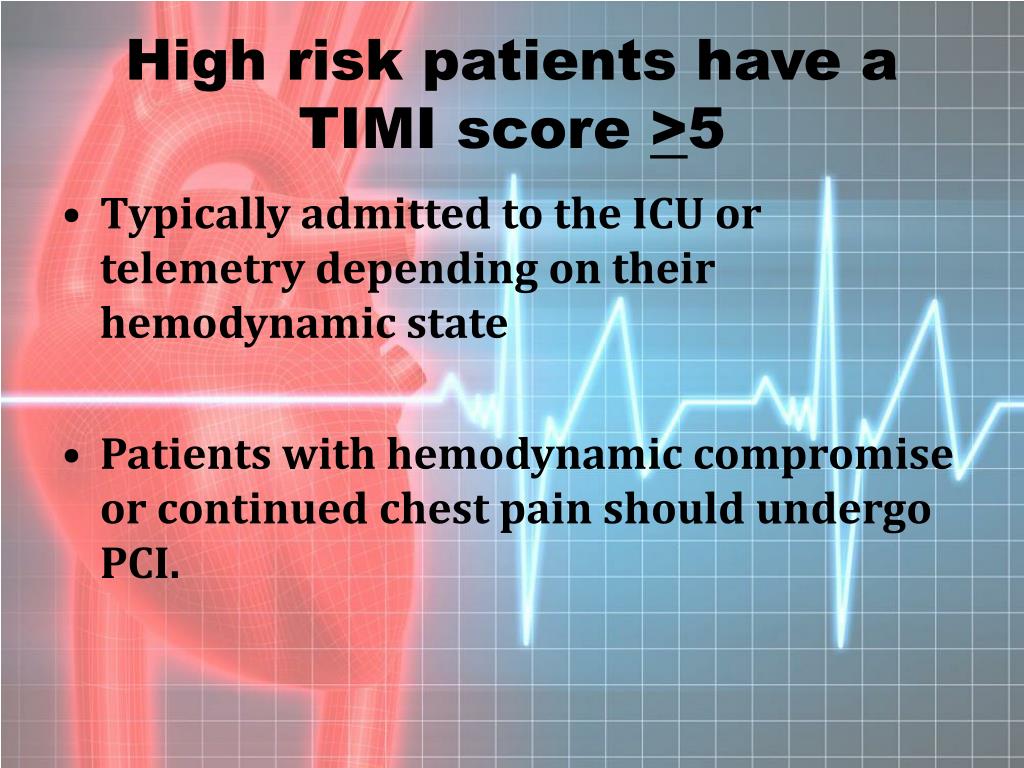

This study compares the accuracy of the GRACE score and the TIMI score in predicting mortality in STEMI patients. This may be related to hypertension which was not a dominant risk factor in our population. The median systolic blood pressure in our study was 120 mm Hg (60 - 209 mm Hg), which is lower than in other studies (Chen et al, 123 mm Hg (104 - 147 mm Hg) inTIME II study, 140 mm Hg (122 - 155 mm Hg) GRACE study, 140 mm Hg (120 - 160 mm Hg) and Correia et al study, 150 ± 31 mm Hg). There is also a significant difference in the in-hospital mortality outcome between patients with systolic blood pressure of 180 mm Hg (P 180 mm Hg is associated with malignant hypertension which increases the coronary artery oxygen demand and occurrence of pulmonary edema. There is a significant difference in in-hospital mortality outcome in patients with a heart rate of 100 beats per minute (P 100 beats per minute is due to ischemia, impaired patient hemodynamics, or increased sympathetic activities. The mortality rates of patients with Killip III class (13% versus 1.4% P 4 h and creatinine values between those who died during hospitalization and those who survived. Most patients are in the Killip I class (72.7%), followed by Killip II (12.1%), Killip IV (11.7%) and Killip III (3.5%) classes. Elderly patients tend to experience more complications and hemodynamic disturbances. The GRACE score and TIMI score were higher in patients who died than in those who survived (P 65 years have a different mortality outcome when compared to patients aged under 65 years in our study.

The mean GRACE score was 124 ± 36 and the median TIMI score was 4 (1 - 12). The GRACE scores were normally distributed, but the TIMI scores were asymmetrically distributed. Baseline Characteristics of GRACE and TIMI Variables Other variables such as troponin, creatinine, ST-segment deviation, myocardial infarction wall, body weight, risk factors (diabetes mellitus, hypertension and angina) and time to treatment of > 4 h were not different between survived and died patients ( Table 2). These patients had Killip III or IV with a history of cardiac arrest at admission. There was a statistically significant difference in accuracy between the scores of 0.082 (95% confidence interval (CI): 0.040 - 0.125 P 100 beats per minute and a systolic blood pressure of 180 mm Hg. The TIMI and GRACE scores revealed a significant graded increase in mortality with a rising score. Forty-five patients died in hospitalization (17%). Patients in this study were 58 ± 11 years old, more often male (78.8%) and have smoking (65.5%), dyslipidemia (61%), hypertension (56.5%) and diabetes mellitus (21.6 %) as their risk factors. Results: The risk scores were evaluated in 255 patients with STEMI, whose data were collected from medical records. Hasan Sadikin General Hospital Bandung between July 2018 and June 2019. Methods: This was an observational cohort retrospective study on consecutive patients with STEMI admitted to Dr. This study aimed to identify the difference in accuracy between GRACE and TIMI scores. These two scores have different accuracy depending on the risk profiles of each region. Global Registry of Acute Coronary Events (GRACE) score and Thrombolysis in Myocardial Infarction (TIMI) score are the most frequently used risk scores for predicting in-hospital mortality. Background: In-hospital mortality of ST-elevation myocardial infarction (STEMI) patients varies between 1% and 19% in Asia.


 0 kommentar(er)
0 kommentar(er)
